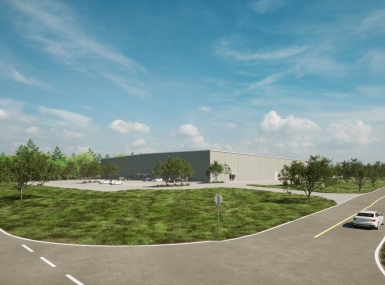Large, small counties grapple with growth

Key Takeaways
New census data shows that nearly two-thirds of U.S. counties experienced population growth last year, with large counties accounting for most of the growth.
Harris County, Texas grew the most numerically, adding roughly 105,852 residents between July 1, 2023, to July 1, 2024. The county added nearly double the number of residents as the second-fastest growing county, numerically, Miami-Dade County, Fla. Population growth in metro areas across the country was largely a result of international migration, according to the census data.
To accommodate its growing population, Harris County — which surpassed 5 million residents in 2024 — has made investments in public safety, healthcare, housing and flood control to “support both current and future generations to come,” according to Harris County Commissioner Adrian Garcia.
“Thousands of people are moving to Harris County every day because there’s opportunity here and the work we’ve done to enhance residents’ quality of life,” Garcia said in a statement.
“With this growth comes the responsibility to ensure our residents have lasting infrastructure and services needed to thrive.”
The county has helped support the Hospital District to increase access to more medical services and reduce wait times, “ensuring more residents receive the care they need,” Garcia said. Expanding healthcare access in medically underserved areas has been a “key priority” amid the county’s growth, according to Garcia.
Harris County’s Precinct 2 introduced ACCESS2HEALTH mobile pod clinics, which were initially developed by Baylor Global Health to address the Ebola epidemic in West Africa, to bring healthcare to underserved areas, as well as areas affected by natural disasters such as hurricanes or flooding.
The pod clinics offer treatment for infectious diseases, routine vaccinations, primary and women’s health care, family counseling, individual therapy and medication management, among other services.
According to FEMA data, Harris County has been hit by seven tropical storms, three floods, four severe storms, six fires and three major ice storms, between 1984 and 2023. The county is highly vulnerable to natural disasters, and is projected to see increased flooding risks due to climate change.
The number of properties in Harris County at risk of flooding is projected to increase by 21.7% between 2020 and 2050, according to First Street Foundation, a nonprofit that specializes in climate risk financial modeling.
“With growth also comes new development, making it essential to prepare for major storms,” Garcia said. “That makes our Flood Control District so critical. The recent approval of our flood control bond ensures we are reducing the backlog of deferred maintenance projects so that we can mitigate the risk of flooding homes and businesses.”
Amid rising housing costs and a limited housing supply, Harris County cut property taxes in half for nonprofit groups that provide affordable housing and used American Rescue Plan Act funding to transform an abandoned property in the county into more than 100 affordable rental housing properties. Public safety has also remained a “top focus,” Garcia said.
“As the former Sheriff of Harris County, I’ve pushed for additional funding for new courts and law enforcement programs to bring justice to both victims and the accused more quickly,” Garcia said. “At the same time, we’ve taken steps to address the growing need for affordable housing, implementing innovative policies that help working families find affordable places to live.”
Large urban counties are not the only growing areas. Two Georgia counties, Dawson and Jackson, were in the top four counties nationally, percentage-wise, for population growth. Jackson County’s population grew by 5.8% from July 1, 2023, to July 1, 2024, and the rural county is expecting to experience more growth, according to Jackson County Manager Kevin Poe. The majority of the growth is coming from the metro Atlanta area, with many people coming from Fulton and Gwinnett counties looking for more land and affordable living, he said.
“We’re so close to metro Atlanta, and for people wanting to get out, there’s land available in Jackson County,” Poe said. “… We’ve tried to change our development codes to try to deal with the growth. We’re not just letting people come in and try to fit as many houses as they can on a piece of property.
“We have minimum lot sizes, minimum house sizes,” he said. “You’ve got to have open space. If you take down trees, you’ve got to replace them.”
SK Battery built a “massive plant” a couple of years ago in Jackson County that produces batteries for electric vehicles, which has also contributed to growth, Poe said. The influx of people and traffic has significantly strained the county’s road network, particularly around schools, according to Poe.
“We’re having to spend literally millions and millions of dollars upgrading roads to make sure we can accommodate all the traffic in the mornings and afternoons,” Poe said.
“We’re having to spend a lot of money on the road network there, but the schools are trying to keep up the best they can.”
Enrollment in Jackson County Schools has increased by 32% in the last five years.
Voters in Jackson County overwhelmingly passed an Education Special Purpose Local Option Sales Tax — a one-penny sales tax that goes toward school improvement projects — and approved $200 million in bonds to build three new schools in the county, in the special election the county held earlier this month.
The county is facing pressure from its aging population to change its taxing structure to accommodate retirees who “feel like they’ve already put in their share into school taxes over the years” who are coming from areas like Gwinnett County, where once you hit 65, you don’t have to pay school taxes or can get a large reduction through homestead exemptions, according to Poe.
“Obviously, the schools need the same amount of money, so if you give tax breaks to a certain sector of the population, other sectors of the population have got to pick up a difference,” Poe said. “But we’ve seen some larger school tax exemptions for seniors and, politically, they’ve been putting a lot of pressure on the politicians to help them out.”
While the growth has been much more positive for Jackson County than negative, the rising cost of housing has been an obstacle, Poe said. “Like a lot of other communities like us, we have no affordable housing,” Poe said. “The average price of a home keeps going up, and that causes a little bit of problems for some of our local businesses and industry trying to find affordable housing for some of their employees.”
The county is investing in expanding its parks and recreation and is breaking ground on a new park that will include walking trails, ball and multipurpose fields and courts for tennis, pickleball and basketball.
“We’re seeing more and more demand on that,” Poe said. “Not only from the new families moving in with kids, but the retirees — they want places to go hiking or walking.”
Last year, Jackson County expanded its senior center and animal shelter and moved into a new county administration building.
New infrastructure undergoing construction or set to break ground include a new elections center, a new emergency medical services headquarters station, a new fleet maintenance public works building and the county’s first airport terminal, according to Poe.
Jackson County is also doubling the size of its solid waste transfer station, as the amount of waste coming in has quadrupled in the last 15 years.
The county doesn’t have its own landfill and instead hauls its waste from the transfer station to a nearby county’s landfill. As the county continues to grow, it’s making plans to increase its water and sewer capacity, as well, Poe said. “There are not too many facilities in Jackson County that we haven’t either renovated, upgraded or replaced,” Poe said.
While urban Harris County and rural Jackson County are experiencing high growth rates at different scales — the former number-wise and the latter percentage-wise — both are working to build the infrastructure and invest in the community services that are necessary to best serve its growing number of residents, according to the counties’ officials.
“As Commissioner of Harris County Precinct 2, I remain committed to making our precinct a place where people can live, work and play, for residents and future residents who wish to make Harris County their home,” Garcia said.
Related News

North Carolina county shell building program draws new businesses
Nash County, N.C. invites potential new businesses to see themselves and their operations in large shell buildings the county erects in its business parks.

